Design Thinking: Designed for Missions

In 2018, as headlines in the global press became captivated by the daily increasing influx of migrants and refugees to Europe—to Germany, Italy and then Spain—a group of ministry practitioners gathered in southern Spain. As Spain’s shores and airports together became the largest receiver of a cornucopia of least-reached people groups fleeing their homelands, this group saw a vast open door.
Those of us who had taken the Perspectives on the World Christian Movement course were reminded of Dr. Ralph Winter describing involuntary coming (“when people were forced to migrate to areas of believers and were influenced toward the believers’ faith”) as one of the mechanisms by which the kingdom of God has expanded throughout history. The immediacy of the opportunity before us to engage the people the Lord was bringing to us prompted local actors to come together to brainstorm, discuss and collaborate to meet the God-sized opening to serve. It was humbling to listen and work with leaders from multiple organizations and churches, as well as with community advocates with years of practical knowledge, skill and gifting.
I have been a big fan of the app Meetup since 2013 and have benefited from its service to announce innovation meetings in our region. It was through one of these Meetup events that I met Gijs, the president of Bold Thinking, as he facilitated several workshops focused on developing solutions for big challenges. He soon began mentoring me in Bold Thinking practices, and I later completed a strategic planning and implementation certificate program through the University of Virginia Darden School of Business that hooked me on design thinking processes.
Though, as the name suggests, design thinking is rooted in the strategies and processes designers use, its principles provide a people-centered approach that can benefit a wide range of fields. This creative problem-solving process focuses heavily on the needs of the people who would benefit from the products or services that are created. As such, it’s a powerful tool that can lead missions practitioners to strategies that address the challenges experienced by the people we are seeking to reach with the gospel and in turn open doors for church-planting.
Our group in southern Spain saw this several times over. Through a series of Bold Thinking exercises built on design thinking, our local community initiated a call to action that has led to several solutions that have positively impacted the lives of migrants and refugees. The first was the development and launch of an NGO by leaders from at least six organizations; this entity continues to meet the needs of immigrants through activities like food distribution and language classes.
Our design thinking approach then led to the development of start-up academies that equip entrepreneurs in the immigrant community to incubate and accelerate their microenterprises. These programs engage the largest experienced need of the immigrant and refugee community—the need for employment and income—by coaching, mentoring and training newly arrived migrants to start local, regional or global companies.
These start-up academies were created to provide environments that inspire and facilitate experimentation, development and growth. They are labs where immigrants’ ideas are developed into products or services that are designed and tested, and where customers become partners. The academy serves as a greenhouse where the facilitators are the gardeners making sure to provide the conditions and nourishment needed for enterprises to grow and become sustainable. So far, three start-up academy programs are being offered in our community, and a fourth is beginning in another city soon.
From there, design thinking has led to the development of a tool to identify the skills of immigrants and refugees and assist them in integrating into the workforce of southern Spain. This initiative has grown exponentially and led to participation in a European Commission-wide call for wider implementation.
Most recently it has led to the development of an artificial intelligence tool that helps immigrants and refugees understand the pathway to asylum and access other services. Applying for asylum is a human right (according to the United Nations), so everyone must be able to enter another country to request it. Despite the fact that Spain and the European Union have clear protocols regarding asylum applications, many migrants do not know where and how to find this information; even when they find it, it is not always available in their native language.
Our solution gives asylum-seekers and other migrants access to the pathway in their own language so they can enter the asylum process and gain access to the labor market. The platform has a simple objective: to combine co-creation and artificial intelligence to make it easier for migrants to understand and access the services to which they are entitled.
Design thinking has led to these durable solutions that are allowing ministries throughout southern Spain to engage immigrants and refugees at their points of need for the purpose of planting churches among the people groups that God has brought to our region. These strategies are enabling us to build bonds of trust in migrants’ social networks and establish a respected name in the immigrant and refugee community—benefits to our church-planting strategy that have been affirmed as fruitful practices in the research of Eric Adams, Don Allen and Bob Fish. In addition, these solutions have reduced the number of refugees and immigrants who leave our community, thus increasing the likelihood of sustainable gatherings of believers from among least-reached people groups.
UVA Darden School of Business
Our design thinking approach was impacted greatly by Professor Jeanne M. Liedtka of the University of Virginia, who, by her instruction, has enabled our staff to grow in our ability to adapt to new opportunities such as expanding mobilization from the Majority World. She also taught us to respond to church-planting opportunities among the largest movement of people in our lifetime by asking four questions:
- What is?” (focused on what exists in the present)
- What if?” (focused on building on the present to envision a new future)
- “What wows?” (focused on helping teams hone in on solutions that stand out)
- “What works?” (focused on testing possible solutions with actual users in the real world
Based on my experience, I believe design thinking is an important resource for identifying solutions to the challenges we are facing in fulfilling the Great Commission. Numerous aspects of this approach make it a good fit for missions practitioners:
- Emphasis on engaging people: As mission organizations and cross-cultural workers continuously strive to connect with least-reached people groups in more direct and relevant ways, the people-centered approach inherent in design thinking provides a range of practical methods and processes through which we can realize the outcomes we are seeking for the kingdom in all its varied contexts.
- Future orientation: As an integrative practice that focuses on identifying opportunities and obstacles through imagination, modeling, experimentation and visioning, design thinking offers tools that enable decision-makers to challenge and often redefine their assumptions about a challenge or opportunity they face.
- Ability to operate in complexity: Design practices fit well with the complex multi-stakeholder landscape of church- planting. With its emphasis on integrating many different perspectives, design thinking offers tangible means of benefiting from strategic collaboration.
- Systematic methods: Design thinking, as opposed to more loosely formulated terms like “innovation” or “creativity,” offers well-described methods and tools that can be readily adopted by mission leaders and field personnel.
As we as a community of church-planting practitioners consider the 7,000+ unreached peoples that must still be engaged with the gospel, design thinking is an important resource for developing durable solutions to reach them. In a world where the windows and doors of opportunities to engage people groups are opening and closing faster than at any other time in history, I hope you will consider adding design thinking processes to your team or organization as a fruitful means to foster innovative change.


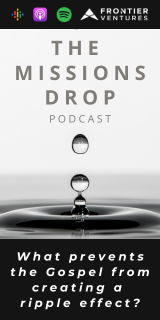
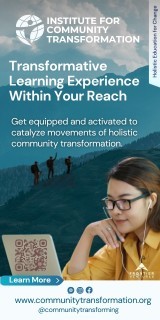
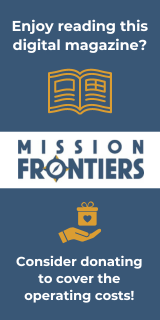
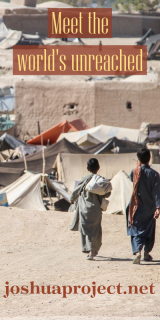
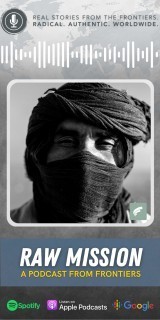
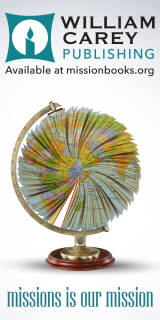
comments